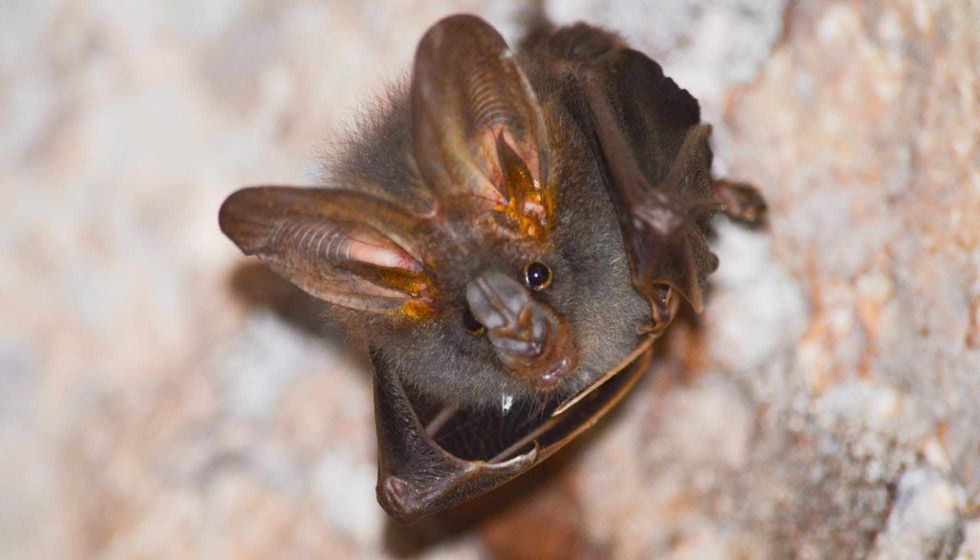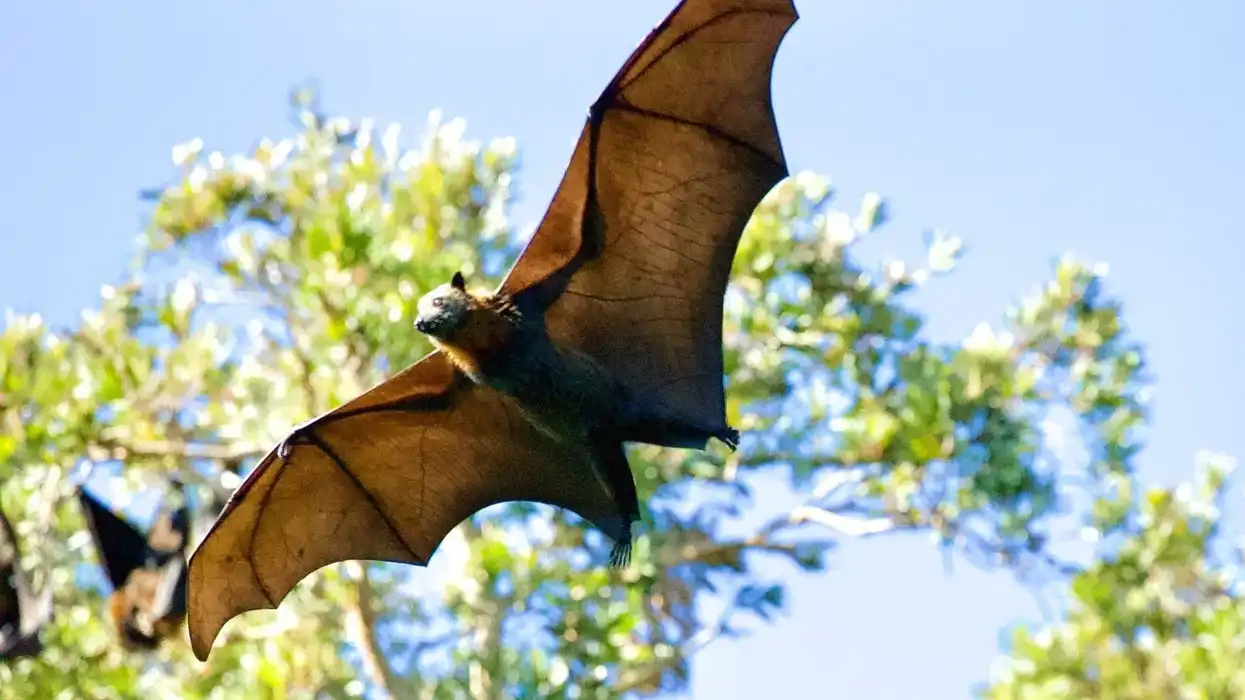Wondering whether a false vampire bat can bite on the neck and kill you? Easily spotted in South Asian countries like India, Sri Lanka, the Philippines they are one of the largest bat species in the world.
They are also known as Asian false vampires and lesser false vampire bats.
While most people believe them to be as dangerous as the vampires in movies, these bats pose no danger to humans. The false vampire bat (Megaderma spasma) has long ears and a long nose but no tail.
They roost in groups and live in the forest, caves, hollow trees, and abandoned dark buildings. The breeding season starts before the rainy season and the females deliver a single offspring after a long gestation period.
They feed on large insects and small solitary animals and also feed to their young ones.
Nesting on trees or caves, the bats can take a long flight to catch up with a suitable group to roost with. Greater vampire bats do exist in India, but they may not be giant-like as we see in horror movies.
Want to know about this unique vampire-like animal? Read on for more interesting facts.
You can also read about Cuban solenodon facts and Bavarian mountain hound facts on Kidadl.
False vampire bat Interesting Facts
What type of animal is a false vampire bat?
The false vampire bat, or the Asian false vampire bat, is a carnivorous bat species having a large body length, wide wings, and large ears.
What class of animal does a false vampire bat belong to?
False vampires belong to the class of Mammalia. This means the females have mammary glands to nourish their offspring. Also, these birds have feathers and fur on their body, which gives them a distinguishable character.
How many false vampire bats are there in the world?
At present, the exact population of these large-nosed bats is not evaluated. As they are a species of Least Concern, it is evident that their population is not threatened.
Where does a false vampire bat live?
The false vampire bats live in the forest, grasslands, deserts, and wetlands. To be more specific, they are seen to thrive in hollow trees, caves, buildings, sheltered areas, etc. Their living range is mostly dark, damp, and warm places.
What is a false vampire bat's habitat?
The habitat of the false vampire also known as the Asian false vampire is a native oriental bird species. Widely found in the eastern Old World or South Asian countries like India, Malaysia, Indonesia, Sri Lanka, Indo China, Sumatra, Andaman Islands, Northern Australia, and North-eastern Africa.
The eastern tropical and sub-tropical regions of the world coincides with the habitat range of the false vampires.
Who do false vampire bats live with?
Although they stay away from interaction with their fellow companions, the false vampire bats roost together in groups. Up to 20-30 bats come together and stay in a single place. They can be spotted hanging upside down from above the ground in dark places.
How long does a false vampire bat live?
The false vampires can live for nine years in the wild. If kept in captivity, their lifespan increases up to 19 years.
How do they reproduce?
Reproduction occurs sexually between males and females. The courtship between a male and female happens for a year, after which they begin to mate.
The mating season coincides with the winters of the Northern Hemisphere ranging from November to January. The females breed a single offspring per year.
Breeding occurs before the onset of the rainy season from April to June after a long gestation period of 150 to 160 days. Since these bats belong to the class of mammals, the females nourish their young ones till the time they become independent hunters of their prey.
Within two or three months, the young one grows rapidly and becomes eligible to find its own food. Once the young ones find their own group, they leave their mothers and roost with the new mates.
What is their conservation status?
As of now, the false vampire bats are listed as a bird species of Least Concern in the IUCN Red List.
This means they are found in plenty of numbers across their habitat range and face no survival threats. However, due to rapid forest deforestation in the sub-tropical regions of the oriental world, the habitat of these birds is coming under threat which might lead to the extinction of this species in the upcoming years.
Hence, it is important to carry out significant research for the proper conservation of these bats.
False Vampire Bat Fun Facts
What do false vampire bats look like?

A false vampire bat (Megaderma spasma) is one of the largest bat species having a long wingspan. Its body color ranges from brown to grayish blue on the upper side and light yellow to gray-white on the inside of the wings.
Its body is covered with fur and the wings have a mix of fur and feathers. They have large ears, big eyes, and a unique noseleaf.
The nose ridge is long and stiff with two flaps on either of its side, giving it a mouse-like appearance. One interesting fact about this mammal is its body is devoid of a tail.
How cute are they?
While most people are fearful of bats, some find the false vampire bats to be very cute because of their long ears and cute-looking nose. The small face in comparison to their body length and broad wings makes them look adorable looking creatures. On a scale of 1-10, they can be given a 5 for their cuteness.
How do they communicate?
These long-nosed bats communicate using the echolocation technique. They search and detect their prey by this method.
Their long ears help them to detect broadband echoes of short and low density that the prey emits. They are also known to communicate physically while looking for mates. Taking long flights, they fly around the entire forest range looking for a perfect partner.
How big is a false vampire bat?
False vampire bats are one of the largest bat species in the world. Their body length ranges between 2.6-5.5 in (6.6-14 cm) and is 2-4.5 in (5-11.4 cm) tall.
They also have long and broad wings, helping them to take an effortless flight. If compared with some other animal, these bats are eight times the size of a sparrow, and twice as small as a vulture.
How fast can a false vampire bat fly?
Although the exact flying speed of the false vampire bat (Megaderma spasma) is not known, it can be said that they fly swiftly. It is evident from the way they swiftly swoon down on their prey on the ground taking a steady flight.
These birds also hover around with great speeds in their habitat range in search of food or shelter.
How much does a false vampire bat weigh?
The fur-coated bat without a tail weighs around 0.7-5.9 oz (20-167.2 g). Since they are one of the largest bat species, their weight is also more compared to other bats.
What are the male and female names of the species?
There are no separate names assigned to the male and female false vampire bats.
What would you call a baby false vampire bat?
Since no separate name is assigned to its offspring, it is best to address it as a baby false vampire bat or young false vampire bat.
What do they eat?
The diet of these bats consists of small vertebrates like frogs, fish, lizards, birds, mice, smaller bats, insects. They take long flights in search of food and hunt their prey by trapping them with their feet. They can detect their prey by echolocation and swiftly comes down upon those animals to feed on.
Are they poisonous?
In some Asian countries, bats are relished as a delicacy. However, if humans eat the false vampire bats, it can become poisonous for them. Apart from this, these bats do not pose any direct threat to humans until provoked. But, these bats can usher in many diseases if they nest or roosts in a household.
Would they make a good pet?
Bats are never safe to be kept as pets. They can bring in a lot of diseases with them.
Also, they cannot live in well-lit human homes as their habitat range is different. Since they live in dark and isolated places, distanced from interaction with other animals, it is difficult for a false vampire to stay as a pet in a human home.
Also, breeding these bats at home is a problem as like other birds they need plentiful open space to mate with.
Did you know...
Unlike other blind bats, the bats belonging to the Megadermatidae family can see through their eyes.
Apart from the mother's milk, the females also feed regular carnivorous food to their young ones.
Otherwise aloof from its companions, the false vampire bat exhibits a unique behavior of sharing the hunted food with its group.
Do false vampire bats drink human blood?
As opposed to the common perception, these animals do not drink human blood. They exhibit indifferent behavior towards humans. Even though they are a carnivorous bat species, but unlike other bats, their diet consists only of small vertebrates and insects.
What is the difference between a fruit bat and a false vampire bat?
Vampire bats are larger than fruit bats in size. They also have long ears and eyes than a fruit bat. As the name suggests, fruit bats feed on fruits and are herbivorous while the false vampires are carnivorous bats. The fruit bats are complete loners but the false vampire bats are mostly found living in groups.
Here at Kidadl, we have carefully created lots of interesting family-friendly animal facts for everyone to discover! For more relatable content, check out these Mexican free-tailed bat facts and numbats facts for kids.
You can even occupy yourself at home by coloring in one of our free printable false vampire bat coloring pages.









